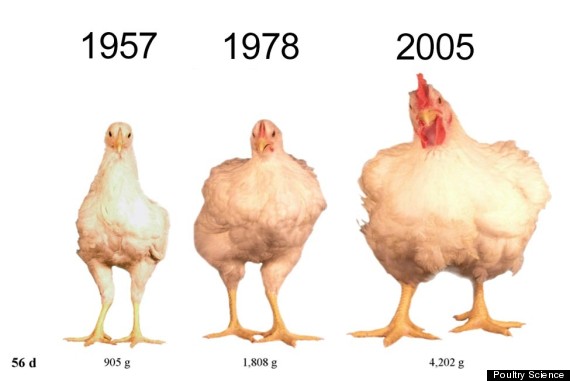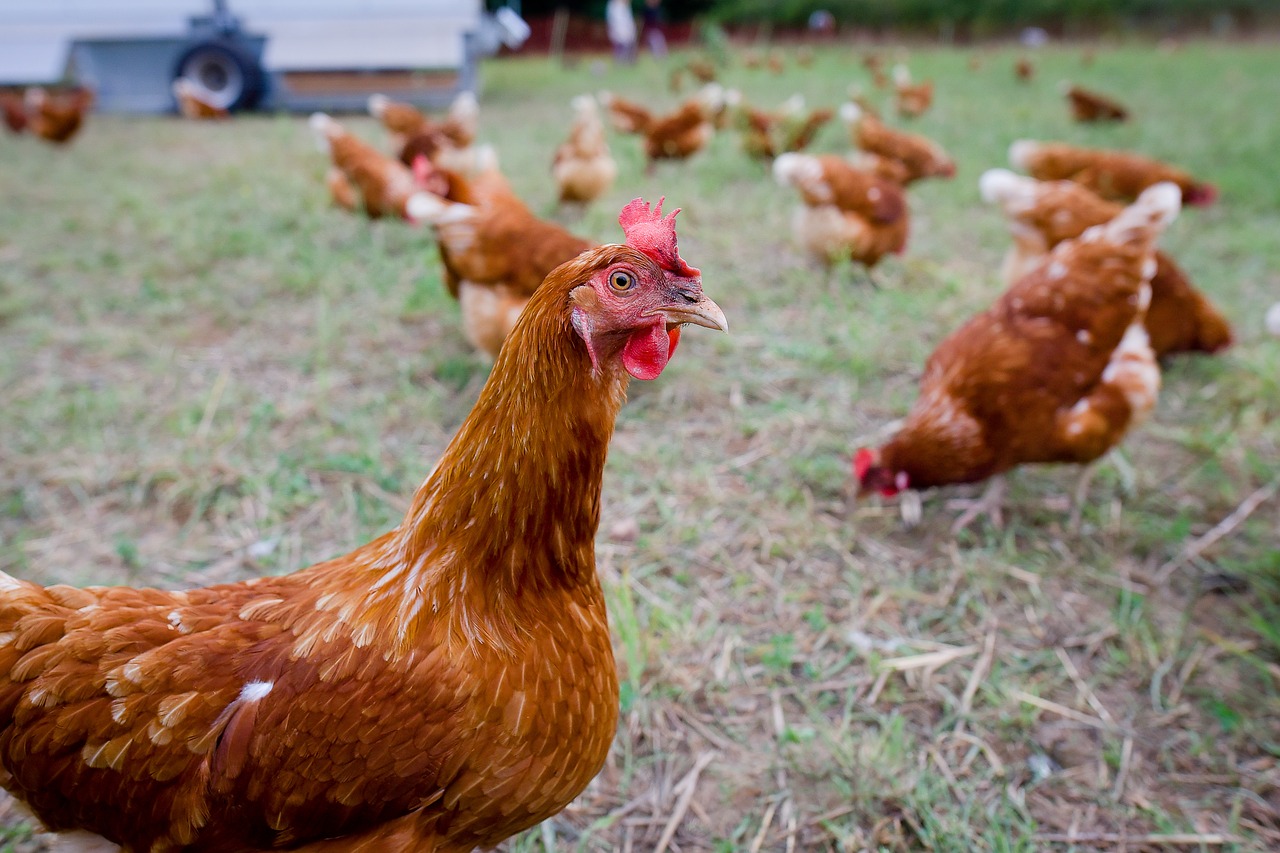This Huge Chicken Raises Big Questions

By:
A video of a massive chicken emerging from a rather tiny hen house took Twitter by storm over the weekend, garnering tens of thousands of likes and retweets. But beyond its obvious entertainment value, the huge bird has also called attention to a serious poultry problem.
Here's the video, in case you missed it.
The exceptionally large bird is a Brahma chicken, a breed that typically weighs between 14 and 18 pounds. The most common chicken breeds weigh in at around 2 to 8 pounds. Popularized in the U.S. and England from 1850 to 1930, the Brahma chicken is the product of selective-breeding from other large breeds found in China, according to The Livestock Conservancy.
But the big bird has also raised big questions about modern trends in chicken breeding. Though the Brahma has stood out for its size throughout its existence, the average chicken is also four times larger than it was in 1950.
 Poultry Science - oup.com
Poultry Science - oup.com
In an effort to meet growing demand for chicken, the poultry industry began promoting breeding techniques in the 1950s that yielded larger, meatier birds. Federal law prohibits the use of growth hormones in poultry, so breeders rely on a combination of selective-breeding and antibiotics containing growth agents to plump them up, Business Insider reported.
This process amounts to "genetic manipulation" that can be harmful to the chickens — and potentially dangerous for the consumers who eat them, Paul Shapiro, vice president of farm animal protection at the Humane Society of the United States, told The Dodo. Chickens that are bred to grow faster than normal often struggle to support their own weight, and they're at greater risk of heart attacks and metabolic disorders.
 Pixabay - pixabay.com
Pixabay - pixabay.com
Public information about the antibiotics fed to chickens is limited, but experts say the practice is widespread. The antibiotics are meant to prevent certain illnesses, but if used over long periods of time, the bacteria targeted by the medication can become resistant. That's concerning for consumers because, in the event that someone eats an undercooked chicken that has antibiotic-resistant bacteria, the bacteria can be transferred.
From the poultry industry's perspective, though, raising larger chickens is both an efficient and humane choice because it means fewer chickens will have to be slaughtered. Still, steady demand continues to drive poultry production, with approximately nine million chickens slaughtered in the U.S. in 2015 alone, according to the National Chicken Council.
